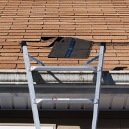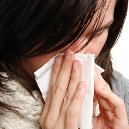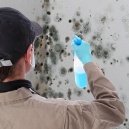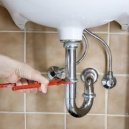Find a pre-screened local mold removal specialist Free Estimate
Find a Mold Specialist Now
Click or Call, Toll-Free 24/7
Mold vs Mildew Differences
We are often asked about the differences between mold vs mildew and about the best method for cleaning mold and mildew. Mold and mildew are both types of fungi and are similar in many ways. The chart below shows some of the major differences.
Mold and Mildew
|
|
Mold | Mildew |
|---|---|---|
|
Appearance |
Mold is usually fuzzy in appearance. It can be many different colors, including blue, green, yellow, brown, gray, black, or white. |
Mildew usually grows in a flat pattern and may appear either powdery or downy. Powdery mildew usually starts out white and may later turn yellow, brown, or black. Downy mildew usually starts out yellow and later turns brown. |
| Problems it Causes | Structural damage to homes can occur over time. Mold can also cause numerous health problems, including respiratory problems, allergic reactions, migraines, inflammation and pain in the joints, mental status changes, and extreme fatigue. | Mildew can cause damage to plants and crops. It can also cause health problems, including respiratory problems and headaches. |
| Beneficial Uses | Some forms of mold are used in the production of food, like cheese, and some forms of mold are used to make medications, like the antibiotic penicillin. | None. |
Health Effects of Mold vs Mildew
Common health effects of exposure to mold (which vary depending on the strain of mold) include:
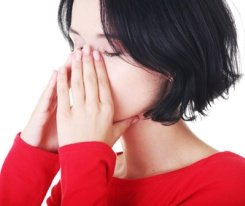
- Difficulty breathing
- Coughing
- Sneezing
- Sore throats
- Migraines
- Sinus infections
- Pneumonia
- Allergic reactions
- Rashes or hives
- Inflammation and pain in the joints
- Mental status changes (depression, forgetfulness)
- Extreme fatigue
Common health effects of exposure to mildew include:
- Difficulty breathing
- Coughing
- Sore throat
- Headaches
As you can see, exposure to mold is associated with more health problems, but exposure to mildew isn’t good for your health, either.
Tips for Cleaning Mold and Mildew
When cleaning mildew and mold:
- Make sure your work area is well-ventilated, as many mold and mildew cleaners give off fumes that are harmful to breathe.
- Wear a facial mask to prevent breathing in mold or mildew spores as well as to protect yourself from breathing fumes given off by the cleaning product you use.
- Wear rubber gloves to protect your hands from the mold and mildew as well as from the cleaning product you use.
- Use an antimicrobial mold and mildew remover. We like Foster 40-80, because it is effective on both mold and mildew, but you can get other brands that will work just as well. Not all household cleaning products and bathroom cleansers will do the job, though.
- Clean the surrounding area as well as the area where you actually see mold and mildew, to make sure you remove all traces of the substances.
- Remove materials that cannot be thoroughly cleaned of mold and mildew, like insulation, carpeting, or drywall, and replace those with new, mold-free materials.
For Help Cleaning Mold and Mildew
If you need help removing mold or mildew from your home, you can schedule a free consultation with a mold removal professional. An experienced professional will come to your home, assess the situation, help you distinguish between mold vs mildew, and advise you about the best way to remove the mold and mildew. Of course, you can hire a professional to handle the job for you, which is recommended if you have mold or mildew covering a large area or if you have symptoms of mold or mildew-related health problems, but even if you opt to do the cleanup yourself, you can benefit from some free professional advice. Follow this link to find mold removal professionals offering free in-home consultations in your area.
Additional Reading:
Mold vs Rust - How to tell the difference and safely remove them from your home.
Return From Mold vs Mildew To Home Page
Free Home Inspection By A Mold Removal Specialist
Search This Website
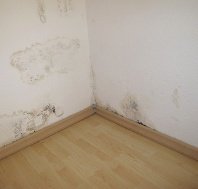
Recent Articles
-
See Our 5 Recommended Mold Removal Companies in Covington, KY
Apr 16, 25 12:59 PM
-
See Our 5 Recommended Mold Removal Companies in Wheaton, IL
Jun 20, 24 10:33 AM
-
See Our 5 Recommended Mold Removal Companies in Aberdeen, SD
Oct 08, 21 04:05 PM
